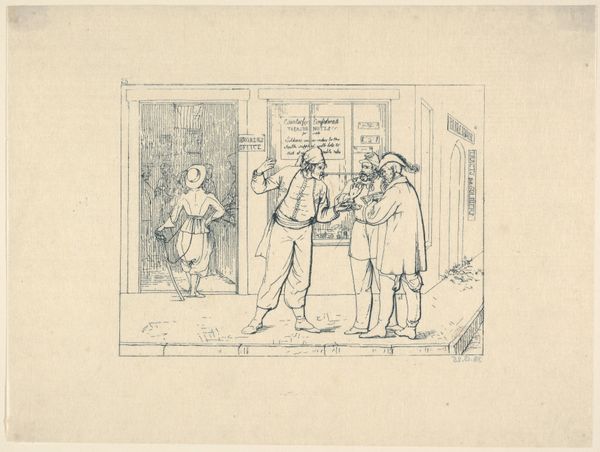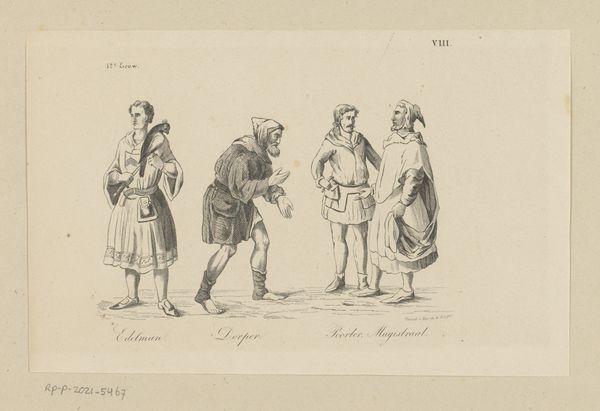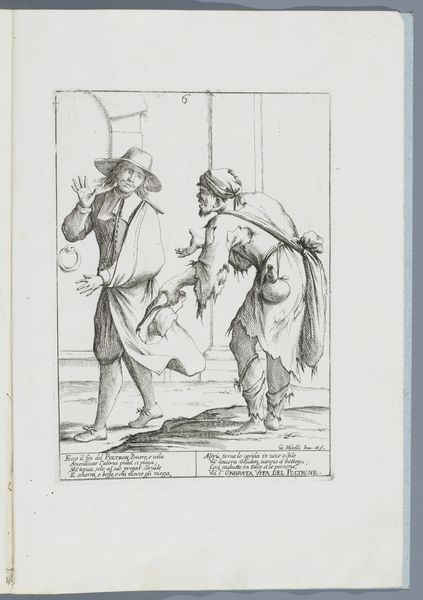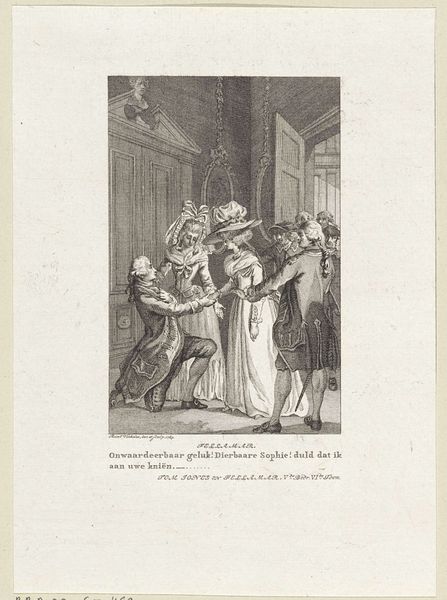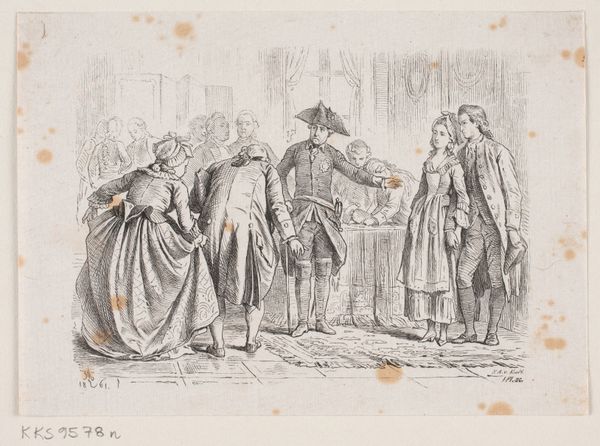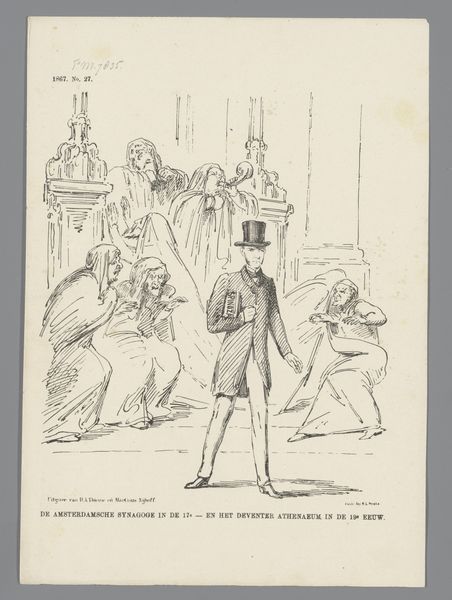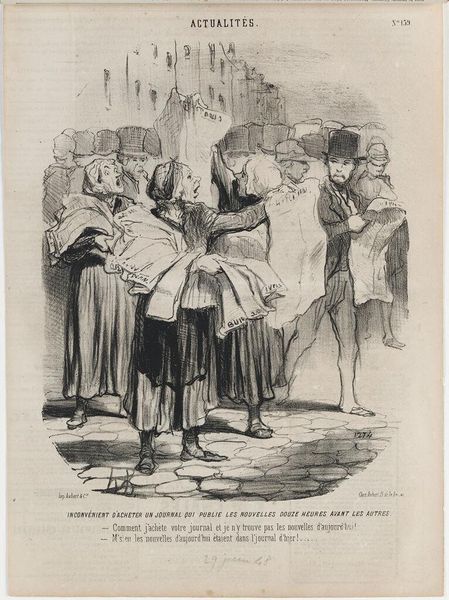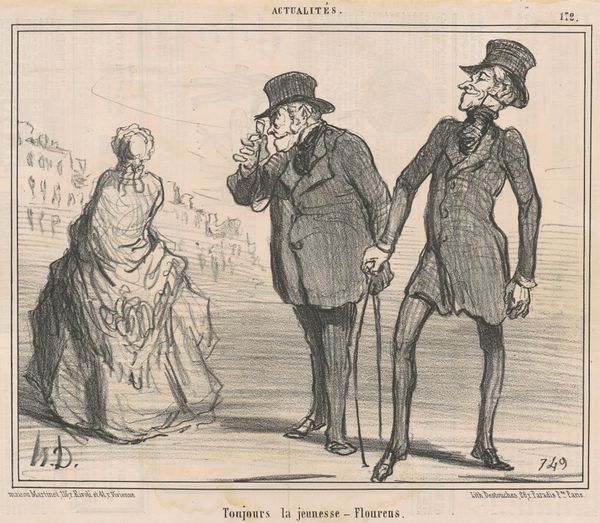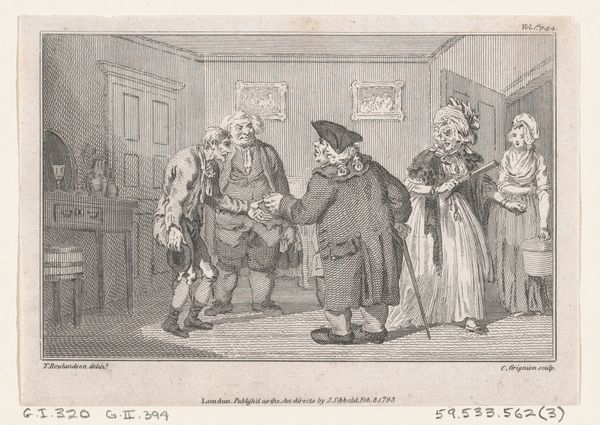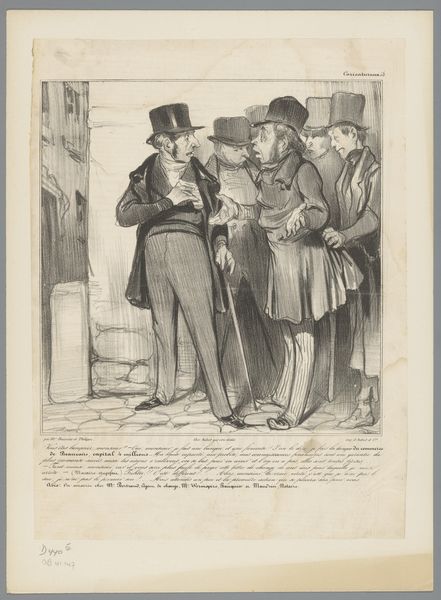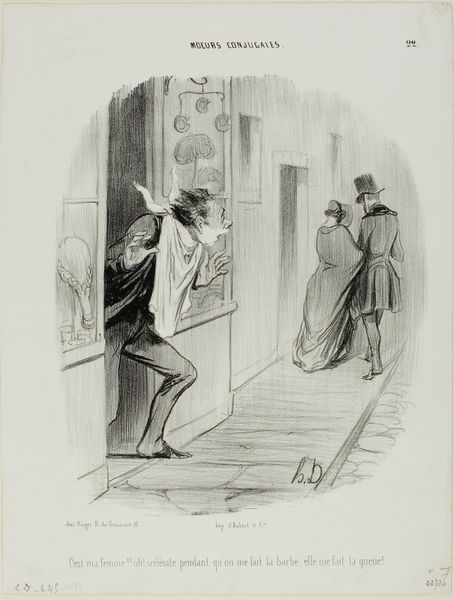
drawing, pencil, pen
#
drawing
#
imaginative character sketch
#
light pencil work
#
quirky sketch
#
caricature
#
sketch book
#
personal sketchbook
#
idea generation sketch
#
sketchwork
#
pencil
#
sketchbook drawing
#
pen
#
genre-painting
#
storyboard and sketchbook work
#
sketchbook art
#
realism
Dimensions: height 215 mm, width 275 mm
Copyright: Rijks Museum: Open Domain
Curator: This pen and pencil drawing, "Spotprent met grappige uitspraken van Haagse dienstboden, 1861", by Johan Michaël Schmidt Crans offers a glimpse into the lives and wit of domestic workers in The Hague. The year, 1861, marks it as a product of the social realities of that time. Editor: Immediately, the stark contrasts strike me. The figures are captured so plainly, with an honesty that hints at humor and maybe even some class tension brewing. It feels…theatrical, almost staged. Curator: Yes, the 'stage' is set in and around the kitchen as suggested in its title. This placement speaks volumes about the workers' sphere of influence. Consider the clothing too: we see class distinctions clearly marked. The details – the cap, the top hat, the aprons – point to labor divisions within a hierarchical structure. The materiality of their clothes reveals their status and how this era made class incredibly visible through garment and labor. Editor: Absolutely. The woman on the right – burdened with what looks like laundry tools and receiving what seems like a delivery in a simple earthenware jug...There's a silent story there, wouldn't you say? I can almost hear their quiet resistance or humorous cynicism through the drawing's candid depiction of class structures and gender. Curator: We shouldn't ignore the snippets of text embedded. They’re little comedic seeds, sparking our comprehension. 'Are you home?' 'No, we’re with the minister at a soirée,' followed by an exchange on liquid measures—'Three pinches?' 'No, six, my folk are named people.' Editor: Ah, the cheeky irreverence. A dash of satire there—poking fun at those upstairs by claiming camaraderie. Curator: Indeed, by focusing on the materials, the attire and language deployed, Schmidt Crans provides a layered narrative accessible on closer observation. We are witnessing how even humorous artwork captures inequalities in 19th-century Netherlands through material means of display. Editor: Looking at the arrangement again, I get the sense these are stolen moments—whispered confidences during long shifts. They capture how people found ways to push against rigidity and inequality within rigid circumstances and labor. A sweet resistance, in a way.
Comments
No comments
Be the first to comment and join the conversation on the ultimate creative platform.
